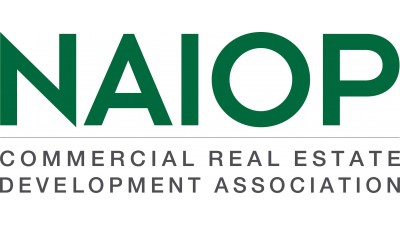Strong Infrastructure Critical For Continued Industrial And E-Commerce Growth

America’s backbone of roads, bridges and tunnels is breaking, with expensive consequences for the economy.
Poor infrastructure will cost the U.S. as much as $3.9 trillion by 2025, a loss equivalent to the gross domestic product of Germany, according to a report from the American Society of Civil Engineers, which rated America’s infrastructure a D+ in its annual report card. E-commerce and industrial real estate, heavy users of America’s roadways, have been impacted by inadequate highway conditions.
As demand for faster last-mile delivery increases among online shoppers, crumbling streets and congested highways exacerbate the difficulty of reaching consumers on time. Online retailers have explored options like drones to bypass traffic while industrial properties well-positioned near highways, ramps and intermodal centers command rent premiums.
“As the fastest-growing segment of the retail economy, these last-mile service providers are dependent upon having superior site locations with access to consumers,” Colliers International Executive Managing Director of Supply Chain and Logistics Gregory Healy said. “Their business lives and dies on this, so poor transportation has a huge impact on industrial sites.”
Traffic in major cities highlights the gap between rising e-commerce demand and failing infrastructure, Healy said. Urban populations have swelled with young professionals and renters, who contribute to increased online spending. Meanwhile, suburban commuters continue to clog highways.
“We need to focus our efforts on improving the infrastructure that supports trade, domestic manufacturers and the efficient distribution of goods in the major markets,” Healy said. “Like everything in the supply chain, it is about eliminating bottlenecks.”
In Los Angeles, traffic congestion costs the city over $19B annually. In Seattle, the home base of e-commerce giant Amazon, the aging Interstate 5 cannot keep up with thousands of new residents and the growing number of delivery trucks on the road.
E-retailers are selecting last-mile fulfillment centers for delivery time more than physical distance to the customer. Colliers International measures both access to the population in a given radius and drive times, Healy said. Geographically close facilities might not support quicker delivery times given existing infrastructure conditions.
The last-mile problem extends north into Canada. King's Highway 401 in Toronto serves as the equivalent of both a U.S. interstate and regional highway. Trucks and daily commuters compete for the same roadways, leading to frequent traffic jams. Compared to urbanized areas with more than 1 million people, Toronto and Vancouver have the lowest total kilometers of highway per 100,000 people in Canada and the U.S., according to a Colliers International report. Approximately 42% of all industrial space in the Toronto metropolitan area is within a 0.8-kilometer driving distance to a highway.
The lack of industrial space near the highway leads to stark differences between rents. In the city of Toronto, the rental rate for buildings outside of a 0.8-kilometer driving distance is $4.95/SF; inside that radius, the rent is $5.22/SF.

Highway density is not the primary problem in the U.S., which has 4 million miles of roads. The critical issue is poor upkeep, which leads to lane closures and traffic jams. Highways with fewer lanes compound the problem by reducing vehicle capacity.
Earlier this month, the Trump administration unveiled its long-awaited $1.5 trillion infrastructure plan. Federal investment will make up $200B while the remaining $1.3 trillion will come from state and local governments, as well as private investors. Critics argue the spending plan will not be enough to bring U.S. highways up to code.
While highways remain the most efficient delivery strategy, e-commerce players and third-party logistics companies have explored strategies to supplement truck delivery, Healy said. Intermodal networks, which bypass traffic conditions via planes and railways, have become a popular method for moving bulk cargo long distances. Logistics providers have also embraced more creative solutions for leveraging various modes of transportation at each stage of the delivery process.
One solution is to load the containers onto rail cars from the ports and ship them to distribution warehouse locations. From there, trucks handle last-mile delivery. The caveat is that rail networks in the U.S. are not dense enough to reach every market solely by rail.
“It is like having a dedicated truck lane, only better, as containers are often double-stacked,” Healy said. “Plus, these trains typically don’t have to compete with vehicular traffic, minimizing the risk of accidents.”
Third-party logistics companies have begun to use ports closer to final shipping destinations. Rather than offload shipments at the Port of New York and New Jersey and then transport deliveries to the Southeast, the Ports of Savannah or Charleston receive the shipment instead, reducing last-mile travel time.
Self-driving trucks are also on the horizon, and their adoption will improve last-mile efficiency. Autonomous trucking company Embark recently had one of its autonomous trucks complete a 2,400-mile trip from Los Angeles to Jacksonville, Florida. While the trip took five days, factoring in breaks for the driver, future smart vehicles could shorten the journey.
“Think about how [autonomous vehicles] will change transport, as well as the competitiveness of certain seaports,” Healy said. “With full autonomy, that trip from Los Angeles to Jacksonville could be completed within two days. The shift to autonomous vehicles will solve a labor issue, a speed issue and a cost issue for many companies.”
Healy will deliver the keynote address about changing logistics needs for industrial at NAIOP’s CRE.Insights: The Last Mile conference March 5-6 in Seattle. Click here for more information.
To learn more about this Bisnow content partner, click here.

